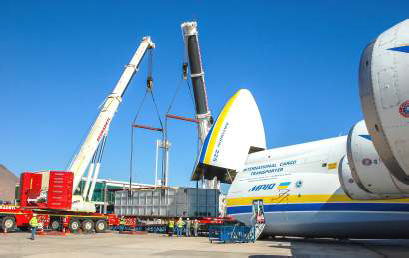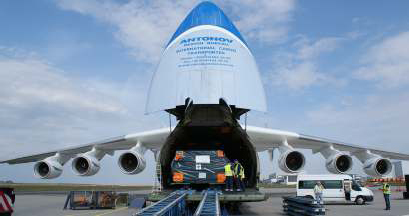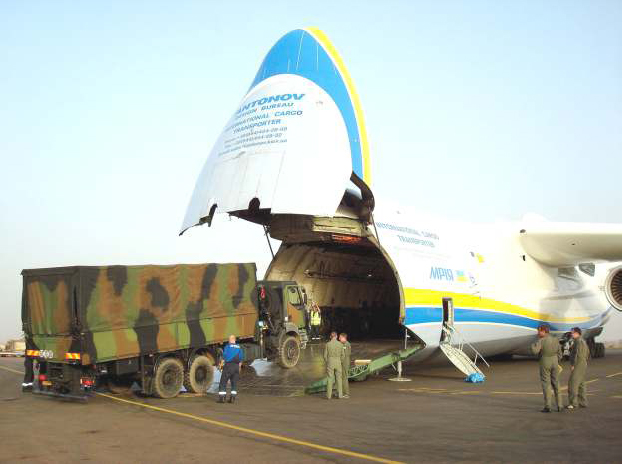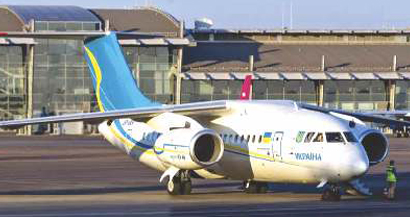Saudi Ports Authority has issued a license to Maersk (Saudi Arabia), part of Maersk International, to operate in all ports in the kingdom.
The license is the fourth of its kind to be issued to foreign investors in Saudi Arabia. Maersk joins other major lines of Barwil, Hapag-Lloyd and the Mediterranean Shipping Company, who all have licenses.
Saad Abdul Aziz Al-Khalb, president of the Saudi Ports Authority, said, “We have issued a license to Maersk (Saudi Arabia) to operate in all nine Saudi ports. This reflects our mutual confidence as container volume increases and KSA expands as regional logistics hub.”
The contract follows the Saudi Ports Authority’s recent approval of general licensing, new maritime regulations and ship financing, as part of the Vision 2030 objectives, along with the improved customer satisfaction, increased performance and new employment opportunities for Saudis.
Al-Khalb added, “Our new positive business environment is attracting great interest from new investors and suppliers. This increases both our capacity and abilities to match marketplace demands to better serve both Saudi business owners, and international brands across the kingdom.”
Saudi Arabian ports, supervised by Mawani, saw growth in tonnage handled during the first half of 2019, increase by 133 million tons, up 4.32 percent on the previous year, with the number of containers handled up by 3.4 million, an increase of 9.22 percent compared to the same period last year.
Schoeller Allibert is a global leader in RTP, and had has been supplying innovative Returnable Transport Packaging solutions in Europe Asia and USA for over 50 years.
It is headquartered in the Netherlands with production on 3 continents and fully integrated R&D centres across Europe.
In the Middle East market, it’s worked with major retail and logistics players to eliminate the wastage caused by limited life packaging such as cardboard cartons and wooden pallets.
“In a typical supply chain scenario, a hypermarket will receive goods, for example fresh fruit, in a 10kg box from a local farm every day,” explains Andy Kelly, sales director, Middle East, Schoeller Allibert. “That box is then thrown away and often, locally, not recycled. Our alternative is a crate of the same size, costing approximately ten times more, but can be re-used hundreds of times.”
“There needs to be a ‘return-abliity’ to these boxes as there is a return freight cost, so we make them fold or nest inside one another to save space on return logistics and storage. They need to be washed – in this scenario – but then are ready to go again. In material cost, after return transport and washing, this can be up to 90% cheaper than the cardboard carton, per trip,” he adds.
Schoeller Allibert also produces foldable IBCs, which saves logistics companies up to 50% per trip, as most intermediate bulk containers are only used once at up to US $100 per unit.
Collapsible, stackable and durable – Schoeller Allibert’s solutions are saving retailers and manufacturers significant costs on the supply chain side of operations
“We make a foldable alternative with an inner liner – a 1,000-litre bag-in-box which makes a returnable IBC,” says Kelly. “It is also more hygienic, stackable, and can be aseptically filled for improving product shelf life.”
Schoeller Allibert’s foldable IBCs were designed for supporting Heinz in the USA with transporting tomato paste by rail, but are now used in a huge variety of industries. One of which is the dairy business in Saudi Arabia, where Almarai uses the solution to cut its logistics costs.
Elsewhere in the Middle East, Schoeller Allibert’s solutions are saving retailers and manufacturers significant costs on the supply chain side of operations. “In the UAE for Landmark Group, we first introduced them to RTP – Returnable Transport Packaging – a few years ago, and the change from cardboard cartons to a structured system reduced their supply chain labour by around 30%,” says Kelly. “Filling and emptying trailers reduced in time by around 80% due to the simplicity of a wheeled system compared with manual packing of differing sizes of carton.”
For Landmark’s new Distribution Centre in Dubai South, Schoeller Allibert custom designed two crates for them. One for internal use in the ASRS (Automated Storage and Retreival System) and another for distribution to their stores. Each has unique features adding substantial value for the client.
For Coca Cola, Schoeller Allibert has designed a new pallet, offering unrivalled durability, which can withstand the demands of the distribution chain caused by forklifts and by being dropped. It can rack up to 1,900kgs and is designed to seamlessly integrate with ASRS systems. The pallet offers the lowest total cost of ownership through its increased life span and high material quality.
“They are produced in a range of colours with corporate branding and RFID chips for asset protection,” says Kelly. Schoeller Allibert produces its designs in the region to the highest standards, bringing its European heritage, experience and quality, to the Middle East and beyond.
A survey of UAE investors and residents show that the recently implemented UAE Permanent Residency Scheme has created a positive sentiment in the investment community.
A random survey of 1,012 respondents indicates that existing investors have more appetite to increase their portfolio, while would-be investors are now more open to start investing.
Seventy-nine per cent of UAE investors say that with the launch of the permanent residency scheme (golden card), they will consider expanding their investments in the country.
Logistics included in UAE economic activities eligible for 100% foreign ownership
This is according to a survey conducted by Lootah Real Estate Development, the real estate development arm of Lootah Holding.
Sixty-eight per cent of the UAE-expat investors said they plan to grow their investment portfolio by investing in property, more specifically in properties located in Dubai. Property leads the investment class option (68 percent), followed by business (26 percent), and stocks (4 percent).
Of those who expressed interest on property investments, 79.7 percent said that they prefer investing in Dubai.
The optimism also extends to those who do not have investments yet. As per the survey, among the 819 respondents who are not yet investors, 29 percent said that they will consider investing in the UAE because of the permanent residency scheme.
Saleh Abdullah Lootah, CEO at Lootah Real Estate Development, said, “The growth in the number of expats who are interested in real estate investments signify that they are becoming more confident of the market. The property sector is one of the major sectors that drive the UAE economy and the shift of their mindset to buying from renting is definitely a great boost.”
Aimed at boosting UAE’s business economy, the new scheme allows property investors with a gross value of at least Dh5 million, expatriates with investments worth at least Dh10 million and entrepreneurs with an existing project amounting to Dh500,000 or more to stay in the UAE longer. As a part of the special talent section, personnel such as executive directors or senior management with a bachelor’s degree, five years’ experience in the UAE region and a monthly salary of Dh30,000 will be eligible for a 10-year visa too.
The UAE government is also keen on investing in the knowledge-based economy as the new visa scheme also allows people with specialized talents and outstanding students to avail it. These include researchers, scientists, physicians, artists, and people who are working in the fields prioritized in the UAE and students with at least 95% in secondary school and a GPA of 3.75 upon graduation.
“The permanent residence visa is a great initiative by the government to stabilize the country’s economy, most especially the real estate market. An increase on the interest of foreign investors and expatriates in buying properties in the UAE is expected which will eventually drive the real estate sector to a boom,” Saleh Abdullah Lootah added.
Carrying animals under the most real-like conditions in the skies, Turkish Cargo performed another life-saving transportation operation. An endangered griffon vulture, which started flying in Serbia and became exhausted in Sanliurfa after flying 1600 kilometers long on its seasonal migration route, was carried to Belgrade by Turkish Cargo.
The 1.5-year old rare griffon vulture named Dobrila, the last chain of the ecological system and living in the Uvac canyon of Serbia only in Europe, became exhausted while flying towards the east on its seasonal migration route, landed in Sanliurfa. After having been found by the farmers in Sanliurfa, it was taken to the Wildlife Rescue and Rehabilitation Center in Urfa.
The griffon vulture underwent some checks and reached its proper and healthy weight again at this center in Sanliurfa, and then, it was released to the nature to continue flying on its migration route. When it was noticed that Dobrila, a member of the fowler family, couldn’t continue flying, the officials of the Ministry of Agriculture and Forestry established contact with the Serbian authorities using the tag and tracking number, available in its foot. Following the discussions between the officials of the two countries, it was decided to send Dobrila to the Biological Research Institute (Siniša Stanković) in Belgrade.
After having been carried to Serbia from Sanliurfa via Istanbul under the sponsorship of Turkish Cargo which acts in line with its mission of respect towards animals’ lives and nature in all its transportation operations, the griffon vulture was handed over to the Serbian officials during a ceremony attended by Tanju Bilgic, the Ambassador of the Republic of Turkey in Serbia, and Goran Trivan, the Minister of Environmental Protection of Serbia.
“Today is a very special day for Dobrila, because, after months of rehabilitation, it will fly for the first time. We thank Turkish Cargo for their support.” said Responsible Biologist Irena Hrıbsek (Foundation for the Protection of Birds of Prey).
Turkish Cargo, acting according to its vision #MissionRescue and carrying out live animal shipments at the highest level, previously transported four lions from Ukraine, which were struggling with hunger and suffering, to their natural habitat in Johannesburg.
Having an extensive flight network reaching more than 300 destinations in 124 countries around the world, Turkish Cargo takes the CITES and IATA LAR (IATA Live Animals Regulations) regulations as the reference, and implements all documentation, caging, labelling and marking rules, prescribed under these regulations, strictly in admission, storage and transportation processes during live animal transportation service it provides with maximum care.
flydubai has announced that starting from December 2019 it will be adding two new flights to its network, taking passengers to Krabi International Airport, Thailand and Yangon International Airport, Myanmar to its network.
flydubai will operate a daily flight to and from Krabi, via Yangon from December 10. The plane will depart Dubai International Airport (DXB) at 10.30am, reaching Myanmar’s Yangon at 6.40pm and then on to Krabi at 7.30pm, reaching the Western province of Krabi at a local time of 10pm.
On the way back, the flight will leave Krabi at 11.05pm, reaching Yangon just after midnight where it will stay until 1.30am and land in Dubai again at 5.35am.
flydubai currently doesn’t serve either country, so the move is key for travellers looking to explore Southeast Asia on an affordable airfare. The flights will be codeshared with Emirates and operate out of Dubai International Airport, Terminal
“We are proud to see the flydubai network expand further east today with the launch of flights to Krabi and Yangon,” Ghaith Al Ghaith, chief executive officer at flydubai said.
Dubai International Airport (DXB) has added a new airline to its family of 70 international carriers and expanded its connectivity to a new destination.
India’s GoAir made its inaugural flight to DXB from Kannur in the South Indian state of Kerala on Thursday evening, said a statement issued by DXB.
The airline has launched daily direct flights between DXB Terminal 1 and Kannur International Airport, making Dubai its sixth international destination.
The fast-growing airline boasts a fleet of 51 Airbus A320s and operates some 285 flights daily to 24 destinations across India. Following the launch of GoAir’s service, five Indian carriers operating approximately 360 weekly flights to 21 destinations across India now serve DXB.
India is the single largest destination country for DXB in terms of contribution to traffic volumes with 12.3 million passengers recorded in 2018, said the statement.
Emirates SkyCargo retained the number two spot as the largest (by volume carried) air cargo operator after FedEx, according to IATA’s World Air Transport Statistics report.
The latest IATA World Air Transport Statistics report shows that express operator FedEx was again the busiest cargo airline in the world with volumes improving by 3.8% year on year to 17.5bn freight ton kms (FTK) in 2018.
It is likely to retain the top spot for the foreseeable future as it is in the process of upgrading its fleet.
Last year, the company ordered an additional 12 Boeing 777 Freighters and 12 B767Fs.
As of May 31, its fleet stood at 681 aircraft compared with 670 aircraft a year earlier and 657 in 2017.
When looking at pure cargo airlines, Emirates came top of the pile despite demand being flat at just over 12.7bn FTK.
In light of the weakening market conditions, the airline has shown its resolve in fleet discipline after downsizing its dry lease freighters from 15 to 11 aircraft over the past two years.
Nabil Sultan, divisional senior vice president at Emirates SkyCargo, recently told another cargo magazine that “every year has its own challenges” with 2018 blighted by higher fuel prices and the impact of the dollar currency exchange in Europe, China and the Indian sub-continent customer base.
The airline’s freighter fleet currently comprises 11 Boeing 777F aircraft, all leased from Dubai Aerospace Enterprise.
According to its own figures – IATA statistics do not include charter operations – the carrier recorded a 1.4% increase in cargo tonnage last year.
One immediate result of which was a 14% surge in pharma goods to 75,000 tons, a welcome increase at a time of economic uncertainty.
Sultan said that the carrier will remain flexible: “So far, utilization has been good and we continue to operate decent load factors.
“However, looking at the economy, over the coming year we might have to re-evaluate what will happen to production and if you have to reduce some of the capacity, then we will definitely do that.
“It is important to know that we are fully utilizing the freighters, and as the operator of a large freighter network, we always monitoring the trade situation very closely.”
Etihad Airways has transported five million passengers to and from China since the launch of its first flights to Beijing 11 years ago, reflecting the importance of the UAE as a strategic partner in the Belt and the Road Initiative.
In a statement to the Emirates News Agency, WAM, Etihad Airways noted that it currently operates five cargo flights on Boeing 777 aircraft to Shanghai, adding that is has transported 600,000 tons of cargo between the two countries over 11 years, on both cargo and commercial aircraft.
The company explained that the growing number of Chinese tourists visiting the UAE exceeds one million visitors per year, and 3.5 million passengers transit through the UAE on their way to other destinations, reflecting the mutual vision of the leadership of the two countries.
Etihad Airways noted that it is working on expanding into the Chinese market, in light of the strong ties between the UAE and China while noting that the number of flights from Abu Dhabi to China is 28 per week.
The company added that the decision by the two countries to exempt their citizens from requiring pre-entry visas, as well as their efforts to promote tourism and investment, have reinforced the UAE’s position as a preferred business and entertainment destination for Chinese investors and tourists.
It went on to say that the airline’s cooperation with Hainan Airlines, China Eastern Airlines and China Southern Airlines has created more destinations for Chinese travellers, as well as more flexible flight schedules.
Etihad Airways began operating the new generation 787 Dreamliner aircraft to Chengdu and Shanghai, and its 267-seat Airbus A330-200 aircraft were replaced by the 297-seat Boeing 787 aircraft on the Abu Dhabi to Chengdu route, a 14 percent increase in seat capacity.
On the Abu Dhabi to Shanghai route, the airline’s Boeing 787-9 aircraft were replaced by the larger Boeing 787-10, which accommodates 336 passengers, a 12 percent increase in seat capacity.
Powered by six turbofan engines and wings spanning 88.4 meters long, the mammoth AN-225 Mriya is 9 meters longer than the world’s largest passenger aircraft, the Airbus A380 superjumbo.
 Tens of thousands of planes fly over the skies every hour but there is truly just one that dominates the airspace when it comes to size, capacity and power, the Antonov AN-225 Mriya, the world’s biggest and heaviest aircraft. Powered by six turbofan engines and wings spanning 88.4 meters long, the mammoth AN-225 Mriya is 9 meters longer than the world’s largest passenger aircraft, the Airbus A380 superjumbo.
Tens of thousands of planes fly over the skies every hour but there is truly just one that dominates the airspace when it comes to size, capacity and power, the Antonov AN-225 Mriya, the world’s biggest and heaviest aircraft. Powered by six turbofan engines and wings spanning 88.4 meters long, the mammoth AN-225 Mriya is 9 meters longer than the world’s largest passenger aircraft, the Airbus A380 superjumbo.
Capable of carrying as much as 250 tons, it had accumulated 242 world records over the past 30 years in hauling super heavy or breakbulk cargo worldwide that includes ships, trains, small planes and helicopters, satellites , rails, super heavy generators, aerospace materials, and so on.
 It’s a unique engineering marvel that remains unmatched since it first flew on December 21, 1988. There is only one Antonov AN-225 in the world with the completion of its twin put on hold in 1994 or three years after the collapse of the Soviet regime.
It’s a unique engineering marvel that remains unmatched since it first flew on December 21, 1988. There is only one Antonov AN-225 in the world with the completion of its twin put on hold in 1994 or three years after the collapse of the Soviet regime.
In 2016, China tried to take over where the Soviets had left off on AN- 225 but the project failed because the 70 percent completed giant plane couldn’t be transported to the country. AN-225 is scheduled to remain in service until at least 2033, according to experts.
Ukraine, a former USSR state which i s marking its 28th year of independence on August 24 from the Soviet communist regime after it collapsed in 1991, holds the pride to Antonov AN-225 Mriya’s (Ukrainian for ‘Dream’) creation.
Conceived and built in the 1980s during the Cold War era, AN-225 was originally designed to carry the Buran Spacecraft, Russia’s answer to America’s Space Shuttle, from the assembly line to the sprawling deserts of Kazakhstan at Baikonur Cosmodrome where Yuri Gagarin launched his pioneering space voyage in 1961.
AN-225 successfully completed its mission and there were plans to build three more of its kind to support Russia’s space exploration projects but the Soviet Union collapsed in 1991, leaving Ukraine and the other former USSR states on their own.
 Ukraine, which today remains embroiled in bitter political and military conflicts with Russia, founded Antonov Airlines, a wholly government-owned cargo carrier specializing on super heavy cargoes. “Antonov Airlines is a division of what was called the Antonov Design Bureau, one of a number of design bureaus within the former Soviet Union. They developed more than a hundred different types of airplanes since 1947 when they first set out and the airline was formed in 1989 before the collapse of the Soviet Union,” Graham Witton, Managing Director of Antonov Airlines, told Air Cargo Update in an interview in Munich, Germany where Antonov Airlines was among the major exhibitors at the four-day Air Cargo Europe 2019.
Ukraine, which today remains embroiled in bitter political and military conflicts with Russia, founded Antonov Airlines, a wholly government-owned cargo carrier specializing on super heavy cargoes. “Antonov Airlines is a division of what was called the Antonov Design Bureau, one of a number of design bureaus within the former Soviet Union. They developed more than a hundred different types of airplanes since 1947 when they first set out and the airline was formed in 1989 before the collapse of the Soviet Union,” Graham Witton, Managing Director of Antonov Airlines, told Air Cargo Update in an interview in Munich, Germany where Antonov Airlines was among the major exhibitors at the four-day Air Cargo Europe 2019.
An aviation executive who began his career in 1997, Witton who has been promoting Antonov planes for commercial cargo since 2000 was appointed in 2016 to oversee the company’s sales & operations.
“ There was clearly a market identified in the commercial sector for Antonov Airlines,” said Witton who noted that the sales and financial aspects of the company are handled in its UK office whilst maintaining a separate satellite office in the United States.
Soaring Charter Sales
The demand for Antonov AN-225 Mriya’s services is at an all-time high and so are with the company’s other planes that includes a fleet of seven AN-124-100 with capacity to carry up to 150 tons, the 60-ton payload AN-22, as well as smaller AN-74 and AN-26 aircraft.
 Witton said business is good at Antonov particularly in 2018 with the company posting nearly 70 percent in growth identifying their key markets as Europe and the United States and some in the Middle East.
Witton said business is good at Antonov particularly in 2018 with the company posting nearly 70 percent in growth identifying their key markets as Europe and the United States and some in the Middle East.
In a separate interview, Andriy Blagovisniy, Antonov Airlines Commercial Director, echoed the same to Air Cargo Update, saying, “Business is growing. We increased our sales team. We now keep 66.7 percent of the whole market and there is prospect for more growth.”
Blagovisniy said the race among countries in the aerospace industry and the United States’ resolve to increase i ts dominance in the outerspace is fueling growth for super heavy cargo which Antonov dominates.
“We work in different industries oil and gas, energy, industrial, maritime, and the growing aerospace sector,” said Blagovisniy who studied aircraft engineering and international relations in Ukraine. “We fly everything. We can fly even trains and ships. In the aerospace industry, we transport satellites from production facilities to launch points. The US and Europe are our main markets.”
 The two said Antonov Airlines continue to tap innovative ideas to keep up with the changing times. It recently developed two new plane models which the global aviation industry could potentially benefit from. “We want people to be aware that here we are, a Ukrainian carrier, not perceived as a sensitive nation to deal with. We’re very flexible to the customers’ needs. A friendly team that can be as personal and flexible as a customer wants,” said Witton.
The two said Antonov Airlines continue to tap innovative ideas to keep up with the changing times. It recently developed two new plane models which the global aviation industry could potentially benefit from. “We want people to be aware that here we are, a Ukrainian carrier, not perceived as a sensitive nation to deal with. We’re very flexible to the customers’ needs. A friendly team that can be as personal and flexible as a customer wants,” said Witton.
And while Antonov AN-225 Mriya’s production line had closed a long time ago, technology continues to be harnessed and introduced to the world’s only super cargo carrier to ease its load of providing lift to the heaviest cargo up for delivery on all corners of the planet.
 Oleg Antonov, a prominent Tupolev Medal, the highest aircraft designer, was the award in Soviet aerospace man behind the legendary construction.
Oleg Antonov, a prominent Tupolev Medal, the highest aircraft designer, was the award in Soviet aerospace man behind the legendary construction.
Antonov planes. He was Ukraine officially credited for establishing the recognized Antonov as a Antonov Design Bureau in Doctor of Science, Kiev, Ukraine, now known as Academician of the Antonov Airlines, in honor of Academy of Science of the his legacy. Ukrainian SSR (1968), Hero A man of many talents, of Socialist Labor (1966). Antonov passed away on Prior, he was elected as a April 4, 1984 at age 78. His member of the Supreme death came just a month Soviet of the USSR of the after he received the gold 5th, 6th & 7th convocations.
During his lifetime, Antonov had been decorated with three Orders of Lenin, the Order of the October Revolution, the Order of the Patriotic War 1st class, the Order of the Red Banner of Labor and the Medal ‘Partisan of the Patriotic War’ 1st class. On November 19, 1984, the OKB-153 was formerly renamed Antonov Design Bureau in his honor.
Source: www.antonov-airlines.com
Antonov Airlines turns 30
 Antonov Airlines is celebrating its 30th anniversary in commercial cargo industry this year with much optimism.
Antonov Airlines is celebrating its 30th anniversary in commercial cargo industry this year with much optimism.
Ukraine’s cargo carrier which was founded in 1989 pioneering in transporting outsize and heavy cargo across the globe looks to a better future with technology and innovation on hand.
“As we look back on 30 years of Antonov Airlines, and the projects that we have completed, we see one of our strengths is the flexibility of our business to adapt to changing markets,” said Graham Witton, Managing Director, Antonov Airlines.
“We are transporting more outsized cargo than ever before, anything from wind turbine components to city centre trams, and practically anything in between.
“We are also moving further into the aerospace industry as digital communications become more integral in the global economy.”
On 11 August 2009, Antonov An-225 ‘Mriya’, the world’s largest aircraft, made history in the Guinness World Record when it transported a generator with a total payload of 187.6 tons from Frankfurt, Germany to Yerevan, Armenia, breaking the record for heaviest single piece of air cargo ever transported.
“When the business first started, many items such as satellite containers, generators and transformers were too big or too heavy to fly on conventional freighters,” said Paul Furlonger, Director, Antonov Airlines, who has been with Antonov Airlines since those first days in 1989.
“Antonov Airlines, as the first commercial operator of the An- 124-100, had to quickly pioneer methods of loading using great creativity and flexibility.
“At the beginning, we were doing things for the first time, almost every time, and over the years, after many thousands of flights, our processes have become more refined & our expertise enhanced so that we now undertake ever more challenging & complex projects with absolute confidence,” added Furlonger.
Second-quarter revenue at IAG Cargo was €281 million, down 3.2% at constant exchange, with volumes remaining static as the air cargo market remains slow.
Sold cargo tons were down 1.1% to 172,000 tons and cargo ton kilometres were down 0.4% to 1,410 million.
In the first six months of 2019, cargo revenue dipped by 0.2% to €556 million, with sold cargo tonnes up 0.9% to 346,000 tonnes.
The 0.2% fall in revenue, representing a 3.1% decrease at constant currency rates, reflect weak market conditions in airfreight and global trade.
Lynne Embleton, CEO of IAG Cargo says that the long-term focus is transforming its business and leading investment and digital innovation.
She says, “In June, we announced the latest development in our APIs, giving customers the ability to seamlessly add our network to their own booking systems. Our API development has also enabled us to integrate with e-booking platforms from major distribution partners.
“The development of IAGCargo.com now forms a core pillar of our customer offering, with improvements being deployed bi-monthly, greatly enhancing our customer experience. We are now taking 28% of our total global bookings online saving customers significant time in the booking process.”